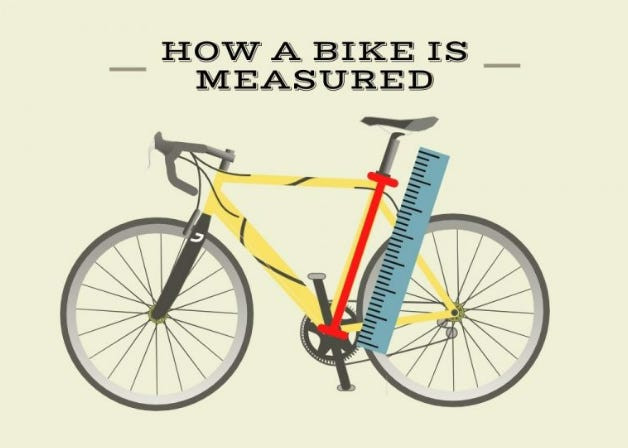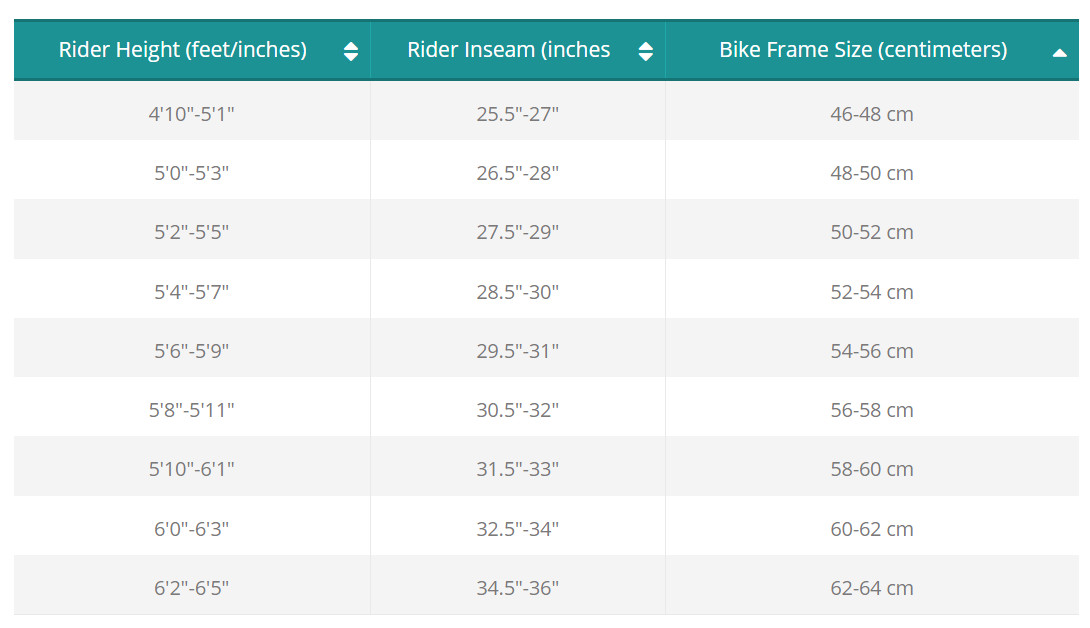Choosing your first bike can feel overwhelming, especially when you’re eager to jump into cycling or triathlon. At usabikers.net, we understand that finding the right entry-level bike is crucial for a positive start to your cycling journey. Many beginners ask: “What are the Top Beginner Bikes for someone like me?” This guide is designed to answer that question and equip you with the knowledge to make an informed decision.
Whether you’re dreaming of conquering a 70.3 or Ironman triathlon, or simply looking to enjoy recreational rides, selecting the appropriate beginner bike is the first step towards achieving your goals. This comprehensive guide, Part 1 of our Beginner’s Bike series, will cover essential aspects to consider, ensuring you choose a bike that’s not only budget-friendly but also sets you up for success and enjoyment.
In this guide, we will explore:
- Key considerations when purchasing your first bike
- Where to find beginner bikes for sale
- The debate: buying new versus used
- Road bike versus triathlon bike for beginners
- Determining your ideal bike size
- Recommended bike brands for beginners
Stay tuned for Parts 2 and 3 (links provided at the end of this article) which delve into bike components, accessories, and how to optimize a road bike for triathlon.
Key Entry Considerations for Your First Bike
Before diving into models and brands, it’s vital to clarify your personal goals. Ask yourself: What do I truly want to achieve with cycling?
- Are you aiming for long-term involvement in triathlons and cycling events, envisioning yourself competing for years to come?
- Or is this a one-time triathlon goal, where you’re seeking the most economical option to simply participate and finish?
Regardless of your ambition level, reliability, ease of riding, and straightforward maintenance are paramount in a beginner bike.
For those committed to cycling for over a year, investing around $2,000 or more upfront is a wise decision. A quality bike from the outset offers significant advantages:
- Enhanced Riding Enjoyment: A well-fitted and smooth-operating bike makes every ride more pleasurable, encouraging you to cycle more often.
- Faster Progress: A bike with better components and design translates to more efficient power transfer and smoother gear changes, helping you improve your performance more quickly.
- Long-Term Cost Savings: Investing in a durable bike initially can prevent frequent repairs and the need for premature upgrades, saving you money in the long run.
If you’re still testing the waters of cycling, a budget closer to $1,000 or even less is achievable if you’re strategic in your approach.
Three Essential Tips for Managing Your First Bike Purchase:
- Establish a Clear Budget: Determine how much you are comfortably willing to spend. This will narrow down your options and prevent overspending.
- Create a Comprehensive Needs List: Beyond the bike itself, consider essential accessories like helmets, shoes, and cycling apparel. Our Beginner’s Bike series will help you identify all necessary items.
- Research Purchase Options Thoroughly: Explore local bike shops, online retailers, and even the used bike market to understand pricing and availability.
Two Important Cautions When Considering the “Bare Minimum” Route:
- The Upgrade Trap: Many athletes who initially opted for very cheap, old, used bikes from online marketplaces often encountered mechanical issues. This led to either costly repairs or the inevitable need to upgrade to a better bike sooner than planned.
- The Triathlon Bug: Interestingly, many individuals who initially viewed triathlon as a “one-and-done” challenge found themselves captivated by the sport after their first race, continuing their triathlon journey for years. Investing in a more capable beginner bike from the start can support this potential long-term engagement.
Where to Buy Your New Beginner Bike
When it comes to purchasing a new beginner bike, you have two primary avenues:
- Local Bike Shops:
- Online Retailers:
We strongly recommend starting your search at your local bike shop.
Visiting a local bike shop offers numerous benefits. You can speak directly with knowledgeable staff, discuss your cycling goals, explore their bike inventory firsthand, and receive personalized recommendations. Even if you don’t finalize your purchase there, establishing a relationship with a local shop is invaluable for future tune-ups, repairs, and expert advice.
Furthermore, local bike shops are hubs for the cycling community. They can introduce you to local cycling routes, group rides, and connect you with other cyclists in your area.
Four Ways a Bike Shop Can Assist with Your Beginner Bike Purchase:
- In-Stock Options within Your Budget: Bike shops often carry a range of beginner bikes at various price points, increasing your chances of finding a suitable model immediately.
- Access to Wider Inventory: If your local store doesn’t have the perfect bike, they can often check the inventory of other branches within their network.
- Assembly and Support for Online Purchases: Some bike shops will assemble bikes purchased from online retailers, ensuring proper setup and providing ongoing service.
- Pre-Purchase Inspection of Used Bikes: Crucially, many bike shops offer inspection services for used bikes you might find online, giving you peace of mind before you buy.
Bike shop employees are passionate about cycling and enjoy helping newcomers enter the sport. Their expertise and willingness to assist are valuable resources for beginner cyclists.
Two Additional Tips for Buying a New Beginner Bike:
- Consider Previous Year Models: Opting for a bike model from the previous year is an excellent strategy to save money on a brand-new bike, as retailers often offer discounts to clear out older inventory.
- Factor in Pedals: Be aware that new bikes typically do not include pedals. You will need to purchase these separately, along with cycling shoes if you choose clipless pedals, so factor this into your budget.
Direct online retailers provide another avenue for purchasing new bikes. Brands like Canyon and Quintana Roo are popular options, offering a range of bikes often at competitive prices. However, online purchases require more self-reliance in assembly and sizing.
Exploring the Used Beginner Bike Market
If budget is a primary concern or inventory is limited, the used bike market can be a viable option. Key platforms for used bikes include:
- Facebook Marketplace:
- The Pro’s Closet: https://www.theproscloset.com/
Facebook Marketplace can be a treasure trove for affordable used bikes. However, due diligence is crucial.
Checklist for Buying a Used Beginner Bike on Facebook Marketplace:
- Age Limit: Avoid bikes that are older than 5 years. Technology and component standards evolve, and older bikes may have outdated features or be nearing the end of their lifespan.
- Condition Assessment: Thoroughly inspect the frame, gears, and brakes for any signs of damage or excessive wear. Test ride the bike if possible.
- Rust and Damage Indicators: Steer clear of bikes with visible rust, wear, or damage, as these could indicate underlying issues and potential future problems.
- Seller Vetting: Attempt to buy from sellers who appear to be genuine cycling enthusiasts or triathletes who are upgrading or no longer actively participating in the sport. Ideal sellers might be:
- Former cyclists or triathletes who have moved on from the sport and are selling their gear.
- Individuals who purchased a bike with good intentions but didn’t use it as much as anticipated and are now selling it.
Pro Tip for Used Bike Purchases: Arrange to meet the seller at your local bike shop and ask if the shop can perform a quick inspection and fit check before you finalize the purchase. This small investment can save you from potential headaches and ensure the bike is mechanically sound and reasonably sized for you.
The Pro’s Closet offers a more curated online marketplace for both new and certified pre-owned bikes and cycling components. They provide a level of assurance and inspection that is often lacking in peer-to-peer marketplaces.
Road Bike vs. Time Trial (TT) Bike for Beginners
For individuals new to cycling and triathlon, we strongly recommend starting with a road bike before considering a Time Trial bike (also known as a tri bike or TT bike).
Here’s why road bikes are generally better beginner bikes for triathlon:
- Cost-Effectiveness: Road bikes are typically less expensive than dedicated TT bikes, making them a more budget-friendly entry point to the sport.
- Triathlon Adaptability: A road bike can be easily modified to be highly suitable for triathlon through simple and cost-effective upgrades (covered in Part 3 of this series).
- Fundamental Skill Development: Road bikes are excellent for learning and mastering essential bike handling skills and cycling fundamentals, which are crucial for safety and efficiency. They are more responsive and versatile than TT bikes, aiding in skill development.
- Versatility Across Terrain: Road bikes are adaptable to various riding conditions, performing well on flat roads, rolling hills, and challenging climbs. This versatility is beneficial for training in diverse environments.
Determining Your Beginner Bike Size
Road bike sizes are typically measured by frame size, indicated in centimeters. This measurement refers to the distance from the center of the crank to the top of the seat tube.
 Bike measurement from center of crank to top of frame
Bike measurement from center of crank to top of frame
The following size chart serves as a general guideline to point you toward the appropriate frame size based on your height:
 Bike size chart in centimeters
Bike size chart in centimeters
For reference, someone who is 5 feet 11 inches tall often rides a 56cm road bike.
Pro Tip for Bike Sizing: While inseam length is a useful starting point, torso length is a more critical factor, particularly for triathlon.
This is especially relevant because triathlon riding often involves adopting an aerodynamic position.
- Shorter Torso: Individuals with shorter torsos may lean towards a slightly smaller frame size, allowing them to comfortably reach the handlebars and maintain an aero position without overreaching.
- Longer Torso: Those with longer torsos may benefit from a slightly larger frame to avoid feeling cramped or overly compressed, ensuring a more sustainable and powerful aero position.
Seat height is easily adjustable to accommodate leg length variations.
Your local bike shop is an invaluable resource for professional bike fitting assistance. Ensure you inform them of your triathlon goals, as this will help them tailor the fit to optimize your position for both comfort and aerodynamic efficiency.
Recommended Beginner Bike Brands
Here is a list of reliable and readily accessible bike brands that are excellent choices for beginner bikes:
Felt, Fuji, Trek, Giant, Canyon, Cervelo, Specialized, Cannondale, Quintana Roo
While this list is not exhaustive, these brands are well-regarded for their quality, durability, and range of entry-level models suitable for beginners. You can confidently explore beginner bikes from any of these manufacturers.
Summary: Key Takeaways for Choosing Top Beginner Bikes
- Define Your Goals: Clearly understand your cycling ambitions and how long you intend to pursue the sport to guide your budget and bike selection.
- Utilize Local Bike Shops: Make your local bike shop your first stop. They are invaluable resources for purchasing, servicing, and gaining local cycling knowledge.
- New vs. Used Options: Consider both new bikes from shops or online retailers and used bikes from platforms like Facebook Marketplace or The Pro’s Closet, weighing the pros and cons of each.
- Road Bike Start: For triathlon beginners, a road bike is generally the more practical and versatile choice over a TT bike.
- Prioritize Torso Length for Sizing: While height and inseam are guides, torso length is crucial for optimal bike fit, especially for triathlon aero positions.
Continue Your Beginner Bike Journey:
In Part 2 of our Beginner’s Bike Guide:
- We demystify bike components 101, providing a beginner-friendly overview.
- Explore pedal and cleat options for enhanced cycling efficiency.
- Detail essential bike accessories you’ll need to get started.
In Part 3:
- Learn 3 effective ways to upgrade your road bike for triathlon, maximizing performance and comfort without breaking the bank.
